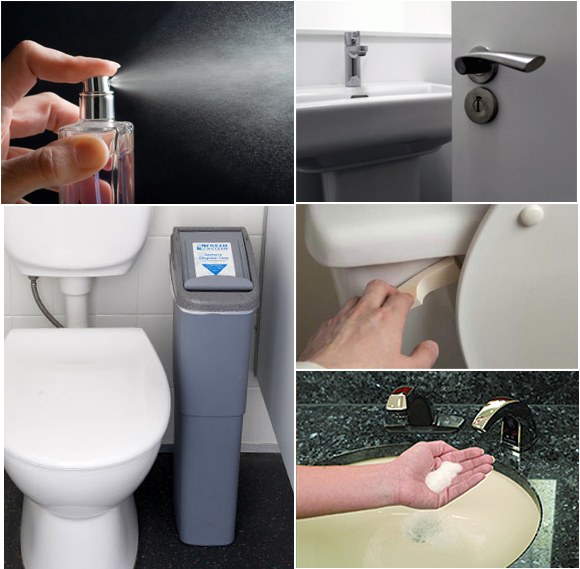 Blog
Blog

Restroom Germ Myths And Realities Revealed
When it comes to public restrooms, cleaning industry professionals have two important jobs: cleaning for appearance and cleaning for health. Maintaining a visibly clean restroom is important for influencing consumer perception, but harmful microorganisms, such as Shigella, Salmonella, Hepatitis A, E. coli, and norovirus are routinely found in restrooms and are associated with outbreaks of illness.
There are many beliefs when it comes to germs and bacteria in restrooms, but how many of them are true?
- Toilet seats are a health risk. – False.
Most common viruses and bacteria die quickly, so by the time they are present on a toilet seat, they probably have already died. Further, skin-to-skin transmission of germs is usually a concern only if there is an open wound or sore.
- The safest stall in a restroom is the one farthest from the door. – False.
Studies indicate the stall closest to the restroom door consistently has the lowest bacteria levels (and the most toilet paper).
- The most contaminated germ “hot spot” in a ladies restroom is the floor. – False.
At the top of the list is the sanitary napkin bin; the floor, the sinks and the underside of the toilet seat follow this.
- Poor hand hygiene is most often due to lack of soap in public restrooms. – True.
When soap is available, people generally use it.
- Just because a restroom smells clean does not mean it is clean. – True.
Odors do not necessarily indicate how clean or unclean a restroom is.
- Toilet seat covers help prevent the spread of germs. – False.
Studies indicate seat covers offer more psychological comfort than real protection.
- A women’s restroom has more bacteria than a men’s restroom. – True.
This is often because women tend to spend more time in the restroom and often have young children with them, as well.
- The door handle on a restroom is invariably a germ hot spot. – False.
Some studies indicate door handles are one of the cleanest surfaces in the restroom.
- It does not matter if you stand or sit when you flush. – False.
When you’re finished, stand before you flush. When toilets are flushed, a fine mist of water sprays up; this “plume” may contain contagious bacteria that can spread intestinal bugs and hepatitis, for example.
Various sources were used for this information including articles written by:
Dr. Anthony Komaroff, Harvard Medical School
Dr. Charles Gerba, University of Arizona
John Protic, Chief of Clinical Pathology, Cabrini Medical Center, New York









